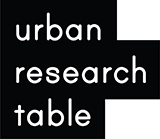Exploring for a New Method for Mapping: Street Edges as In-Between Space
According to pedestrians‘ perspective, the street edge is the portion of the street interface that determines the attractiveness of the city at the eye level. Gehl defines the city’s edge as the boundary that limits the visual field and divides private and public space (Gehl, 2010). Therefore, this boundary on the ground floor is not just an interface, but rather an exchange zone accommodating various activities.
By observing the form of a street edge in different cities around the world, we can find two main patterns. One is based on the classic street design of European towns, where unity is emphasized by aligning buildings and the usage of colonnades or arcades as a strong motif. The other, which is more common in Asian cities like Tokyo, is characterized by fragmented boundaries and diverse setback spaces[1]. As a result, in this case, the solid boundary is softened, stratified, and produce an ambiguous scenery. Moreover, this fragmentation of the street edge creates a transition space between the building’s interior and the external street space.

Thanks to the presence of this interactive interface, Tokyo‘s walking experience becomes rich and varied. Streetscape pictures of Tokyo show manifold qualities created by elements of street edges. Setback spaces provide shadows and comfortable places. Their different depths and heights allow for diverse activities. Moreover, surfaces are diverse in visual permeability: some are completely open, others are covered by transparent materials, and some are translucent. Layers of surfaces produce intermediate spaces and contribute to the sense of depth.

Apart from the setback, there are also other elements that affect the walking experience. Trees, awnings, and canopies offer shades and shelters. Signboards, shop decorations, overflowing commodities and street greenery infill the space in-between buildings and street, thus enriching pedestrians‘ perception. Although these elements are removable and changeable, they play an important role in shaping a friendly walking environment and moderating the microclimate.



How can we describe and analyze the street edge, the most active exchanging space which stimulates all senses of the pedestrian and attracts activities? Conventional mapping methods may lose their efficiency and effectiveness in visualizing the variability and heterogeneity of street edges. It can be attributed to the fact that as the pedestrian walks down the street, portions are unveiled gradually in an unfamiliar way. Successive scenes break down the full view through a dynamic process. Even the same segment emerges in different appearances as the pedestrian comes closer to it. This incompleteness represents ambiguity and diversity of street edges as in-between space. Therefore, it is essential to devise a mapping method to represent the unfolding of the street boundary in a motion way, involving the visual, temporal, social and functional dimensions at the microscale. The potential of utilizing moving images[2] to analyze the street edge and study urban form at a human-scale is worth exploring.
[1] Setback space is the space between the boundary of a building and the lot line on the ground floor. It comprises niches, nooks, alcoves,
[2] Moving images are the serial stills exported from a film clip and organized in a certain way to delineate the scenes viewed in motion.
References
Gehl, J. (2010). Cities for people. Washington, DC: Island Press.
